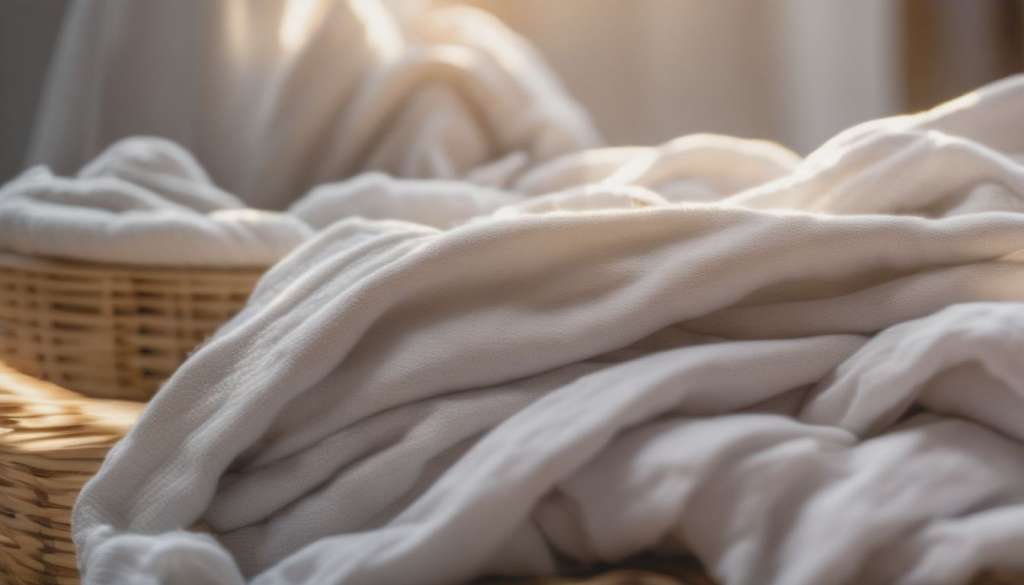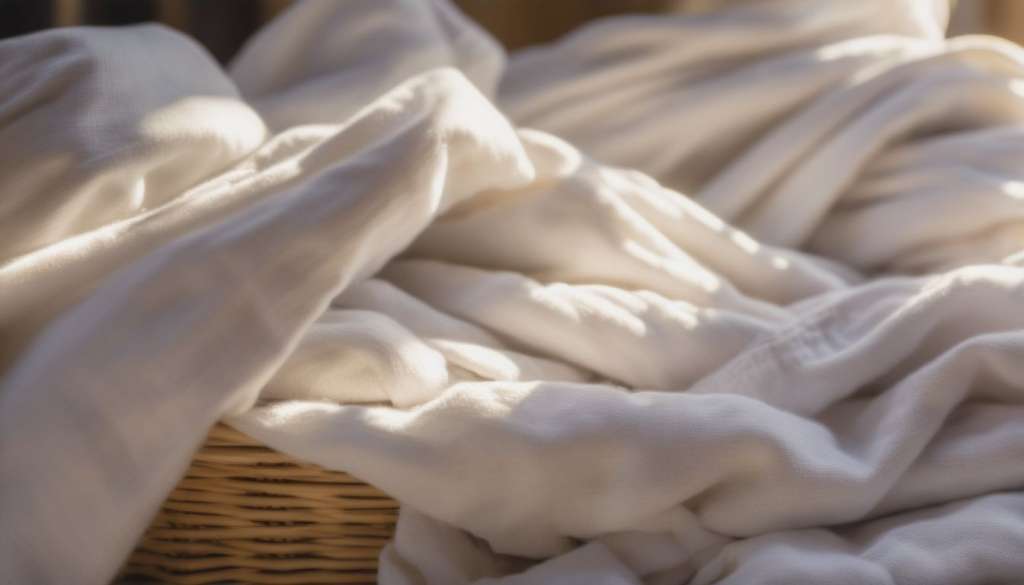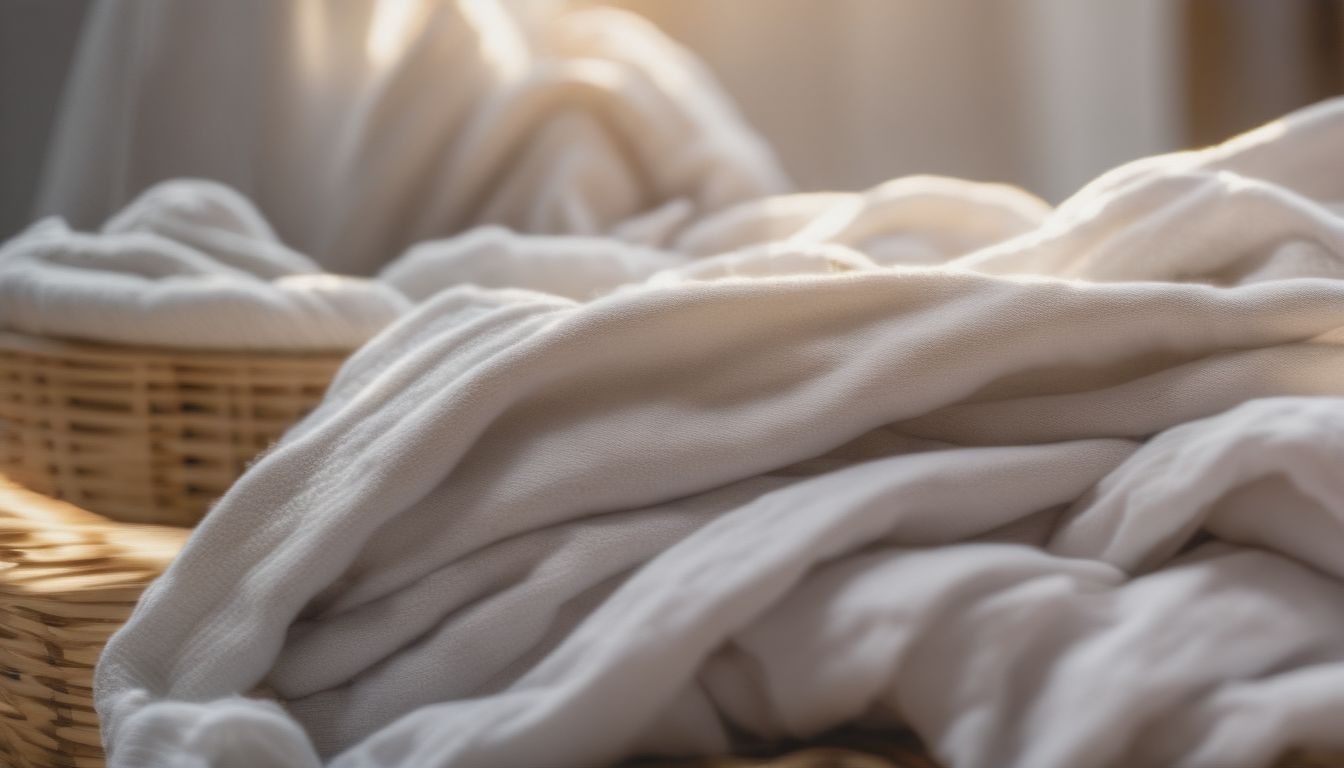Down comforters are known for their lightweight warmth and plush comfort. However, like any bedding material, they require proper care and cleaning to stay fresh. It’s common for down comforters to develop odors over time from body oils, sweat, moisture, dust mites, and even mold or mildew if not cared for correctly.
Don’t worry – with the right washing techniques, stain treatments, drying methods and storage solutions, you can keep your down bedding smelling as lovely as the day you bought it. This beginner’s guide will teach you everything you need to know about eliminating odors from your down comforters.
What Causes Down Comforters to Smell
Before learning how to remove smells from down comforters, it helps to understand what causes the odors in the first place. Here are some of the most common culprits behind stinky down bedding:
Body Oils and Sweat
- As you sleep, you sweat and shed dead skin cells and body oils onto your bedding. These oils and sweat residues can cause your down comforter to take on a stale, smelly odor over time.
Dust Mites
- Microscopic dust mites feed on dead skin cells that accumulate in bedding. As they digest these cells, they release waste products that cause musty, funky odors.
Mold and Mildew
- Down is very absorbent and moisture-retentive. If stored damp, down comforters can easily develop mold, mildew and bacterial buildup leading to foul stale smells.
Soil and Stains
- Environmental dirt, food or drink spills, etc. ground into the down over repeated use also makes it stinky.
Regular cleaning is key to preventing odor buildup from these sources in your down bedding.
The Impact of Down Comforter Odors
Smelly down comforters aren’t just unpleasant to be around – they can cause other problems too:
- Poor sleep quality when smells disturb you.
- Allergic reactions to dust mite matter or mold spores.
- Spread of bacteria and viruses through contact with dirty bedding.
- Deterioration and damage to the down filling itself over time.
This makes it all the more important to stay on top of cleaning and deodorizing your comforters.
Common Down Comforter Odors
Now let’s look at some specific types of smells that can emanate from down comforters and how to diagnose them:
Musty Smells
Musty, stale odors are very common in down comforters. Look out for these distinct smells:
- Earthy, damp smell – likely from moisture buildup in stored bedding.
- Old socks/locker room aroma – caused by microbes or bacteria feeding on sweat, dead skin cells or oils.
- Moldy, funky odor – signals mold or mildew growth in the down itself.
Musty smells mean it’s definitely time to thoroughly clean your comforter. Leaving them risks worsening odors or even mold taking over the filling.
Chemical or Machine Odors
Sometimes what smells isn’t the down itself but residues from:
- Laundry products like detergent or fabric softener.
- Cleaning agents used incorrectly on the bedding.
- Industrial smells from a dry cleaner.
These often resemble synthetic aromas – some describe it as plastic-like or chemically.
If this is the primary smell, try washing the comforter again without any detergent or dryer sheets. Just hot water and an extra rinse cycle will generally remove these residues.
How To Clean Smelly Down Comforters
When your down comforter starts to smell funky, what’s the best way to clean it? Follow these steps to thoroughly wash most odors out of your down bedding:
1. Air It Out
First allow the comforter to air out for several hours to a full day if possible. Hanging it outdoors is ideal to let fresh breezes blow through.
This alone can help dissipate mild odors. But for stronger smells, move onto washing next.
2. Check Washing Instructions
Before anything else, consult your comforter’s sewn-in tag for the manufacturer’s washing recommendations.
Things to note are:
- Ideal water temperature – usually warm or cold water. Hot may damage the down.
- Bleach recommendations – can bleach be used to kill bacteria?
- Machine washable? Double check it’s not labeled dry clean only.
- Tumble dry settings – often low heat. High heat risks clumping or singeing.
Follow all guidelines on the tag to clean safely.
3. Pretreat Tough Stains
For identifiable stains or heavily soiled areas rub in a pretreat stick, paste or spray before washing.
Make sure the product is formulated for use on down and feathers. Key options are:
- Liquid detergents – Dawn or other grease-cutting dish soap works well.
- Oxygen whitener spray – helps lift organic stains without bleach.
- Enzyme cleaner – breaks down stubborn protein-based stains.
Let it soak 5-10 minutes then launder as normal.
4. Wash Using a Mild Detergent
When machine washing, choose an ultra-gentle detergent without dyes, brighteners or other additives:
- Sensitive skin or baby laundry detergent
- Specialty down wash
- Mild soap like Orvus Paste
- Alternative like hexane or sodium percarbonate
Use the smallest amount needed to lift soils. Measure according to your washer’s size:
| Washer Size | Detergent Amount |
|---|---|
| Standard | 2-3 tablespoons |
| Large/Heavy Duty | 1⁄4 Cup |
| Commercial/Industrial | 1⁄2 Cup |
5. Rinse Extensively
The key to detergent residue removal is thorough rinsing after washing.
Be sure to select:
- The longest rinse cycle option
- Multiple back-to-back rinse & spin cycles
- An extra rinse if still bubbly/smelly
This prevents any detergent smell being left behind.
6. Dry Promptly & Completely
Get your down comforter dry as soon as the wash ends. Lingering moisture breeds mold and bacteria.
You can air or machine dry, just ensure it dries fully. Refer to your care label for any temperature restrictions.
- For air drying, make sure humidity is low.
- To machine dry, use tennis balls to fluff and evenly dry the down.
7. Air Out Before Using
Even after drying, allow your comforter to continue airing out for up to 48 hours if any faint odors linger. This gives time for any damp spots deep in the down to fully evaporate.

Natural Odor Remedies for Down Bedding
You may also try these homemade odor eliminators to help remove smells from down comforters:
White Vinegar Rinse
White vinegar naturally neutralizes odors. Mix a solution of 1 cup vinegar per gallon of cool water.
During the wash cycle, add it directly to the drum during the final rinse. The vinegar smell dissipates as it dries.
Baking Soda Deodorizer
Baking soda is a mild alkali that destroys odor causing acids. Just 1⁄4 cup per wash disinfects and deodorizes laundry.
For stronger smells let your comforter soak with baking soda directly on heavy soil spots before washing.
Lemon Juice & Sunshine
The natural acids in lemon juice destroys bacteria and freshens fabrics. Add 1⁄2 cup lemon juice to your wash cycle.
For brighter whites and disinfecting power dry your comforter in direct sunlight after washing.
Storing Down Comforters To Prevent Odors
Proper storage between uses is vital for eliminating moisture and keeping down comforters fresh longer:
Allow To Fully Dry First
Never store a damp down comforter – dry thoroughly first even days longer than normal to ensure zero moisture remains inside.
Use Breathable Fabric Storage
Avoid sealing in plastic bins or vacuum packs. Instead store folded loosely in breathable cotton cases or mesh laundry bags.
Include Cedar Wood
Place cedar blocks, planks or scented sachets in with stored bedding. The natural aromatics in cedar wood repel moths and prevent musty smells.
Store In Cool, Dry Spots
Keep comforters in low humidity environments between 55-75°F to inhibit microbe and mold growth. Avoid attics, basements or garages with exposure to dirt or moisture.
When To Consider Professional Down Comforter Cleaning
For severe odors, stubborn stains or signs of damage, professional cleaning may be needed:
- Pervasive musty, mildewy smells
- Visible clumping of down filling
- Presence of black mold spots
- Failed attempts removing stains at home
The pros have commercial washers, dryers and sanitizers to deep clean badly soiled bedding. They can also treat spots, disinfect and fully restore even significantly smelly, torn or worn down comforters much more effectively.
Expect to invest $25-$100+ to have your king or queen down comforter expertly cleaned depending on its size and condition.
Choosing a Reputable Down Comforter Cleaner
When selecting a specialty down cleaner, check they:
- Specialize in down and feathers
- Detail full cleaning methods upfront
- Offer odor removal guarantees
- Have positive reviews for similar jobs
- Provide pick-up/drop off service
- Are members of the IDFL trade association
This level of expertise ensures your comforter gets the proper maintenance needed to eliminate odors.
Maintaining Fresh Smelling Down Comforters
Caring for your comforter doesn’t need to be difficult with the right habits:
- Wash two times per year – seasonally Fall & Spring
- Check regularly for soil buildup in hidden corners
- Pretreat stains quickly as they happen
- Always allow to fully dry before use or storage
- Invest in quality covers to protect while sleeping or storing
- Consider periodically taking them for professional cleaning every few years
Little efforts like these will keep your down comforters always feeling and smelling their coziest for restful sleep!
Conclusion
Unpleasant smells coming from your down comforters or pillows is a common grievance that can disrupt sleep quality. But as you now know, these odors stem from just a few identifiable causes like body oils, sweat, mold or poor storage.
Thankfully by understanding what makes down bedding smell and learning the proper cleaning, drying and storing methods above, you can keep your comforters fresh for years of blissful use. Implement just a few of these scent removal and prevention best practices today.

Frequently Asked Questions
Why does my down comforter have a musty odor?
Musty odors typically happen when down comforters are stored while still moist allowing mold or mildew to grow. Always make sure to completely dry down bedding after washing before storage or use.
How can I get body oil smells out of my down comforter?
It’s best to pretreat any visible oil stains with an oxygen based stain remover or enzyme presoak before washing with an ultra-mild down detergent. Be sure to thoroughly rinse away all soap residues which can leave behind chemical smells if left in the down.
What’s the best way to dry a wet down comforter?
Wet or even damp down will quickly develop funky, stale odors. It’s vital to completely dry down comforters fast after washing. Use low heat machine drying on delicate setting with clean tennis balls to fluff and evenly dry all inner down filling.
Why does my comforter smell like dirty socks?
An old sweat or locker room smell usually means bacteria from body oils or dead skin cells is accumulating in the down. This causes the foul ‘dirty sock’ odor. Thoroughly washing with hot water and an oxygen based down cleaner removes them, deodorizing the bedding.
How can I remove mold from my down comforter at home?
Visible black mold growth requires disinfecting the down using a sanitizer solution. Soak the comforter for 20 minutes, then rinse clean. Dry on high heat over 120°F to kill any remaining mold spores. You may need to repeat this process multiple times to fully remove mold from down.
What’s the best way to wash down comforters?
Use an ultra-mild sulfate-free detergent without dyes or fragrances formulated for down. Wash on gentle cycle in cold or warm water per your care label. Rinse extensively – repeat rinse cycles at least twice. Machine dry with clean tennis balls at delicate setting or hang dry fully in low humidity before use.
How often should I clean my down comforter?
To prevent odors, experts recommend washing down comforters at least 2 times per year – in spring and fall when switching bedding for the season. Wash more frequently if you sweat heavily at night or have pets sleeping on the bed adding oils, dander and soils.








